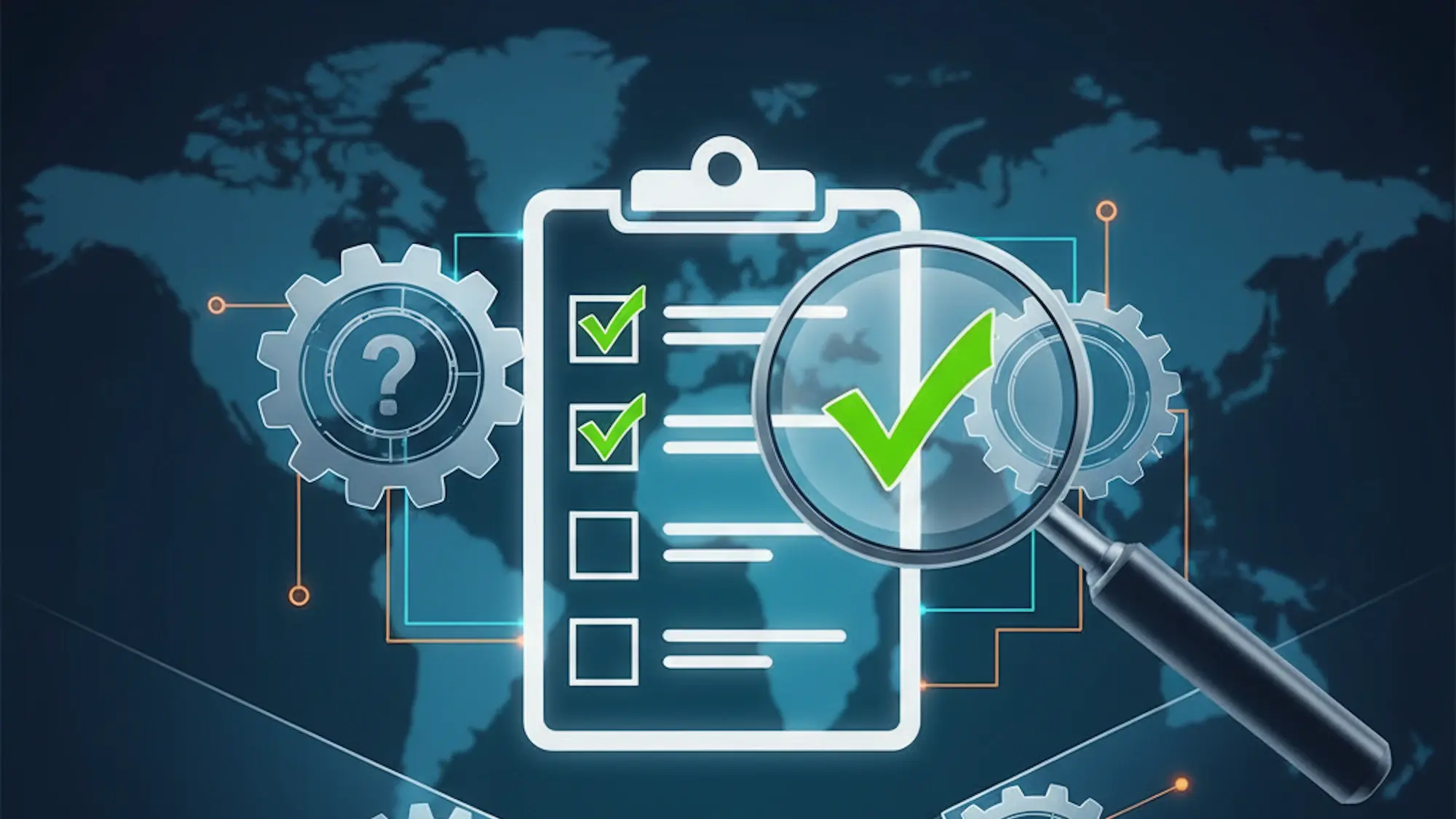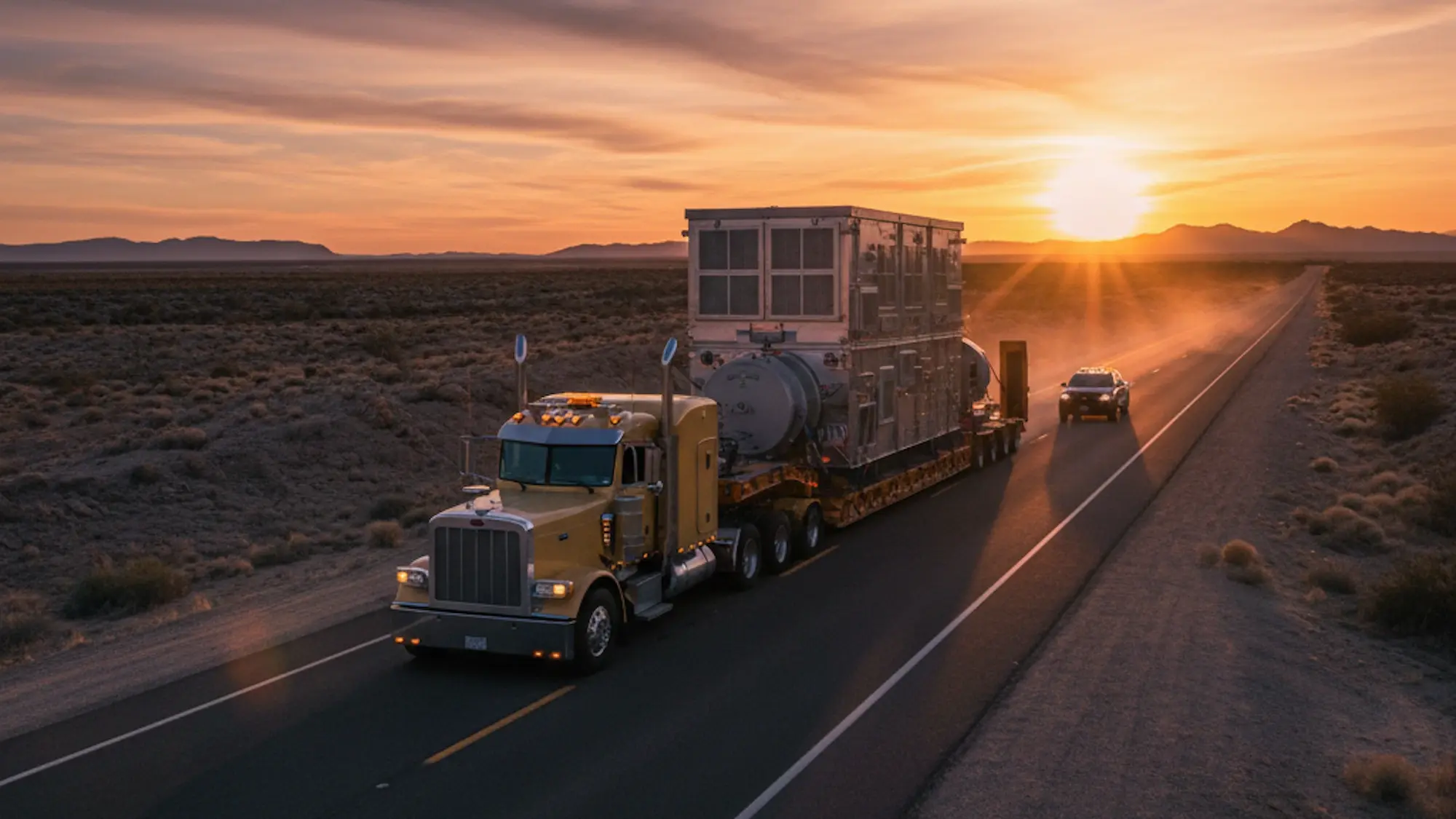
I. The True Cost of Uncertainty
Are your critical freight budgets true budgets, or are they just guesses? This isn't a trick question; it's a genuine look into the high-stakes world of Strategic Freight Management. When you're dealing with critical freight—like a crucial turbine, a custom machine, or critical infrastructure—the cost of a mistake is massive. It includes not just the item's cost, but the expense of a whole project stopping because logistics failed.
For too many companies, their first logistics quote is usually more like a rough estimate than a predictable expense. The biggest problem, though, is the huge gap that often comes between the first quote you sign and the final invoice you pay. These unpredictable costs destroy budgets, making project managers scramble to cover expenses.
But what if you could change that? This blog will show you how to move past basic tracking and achieve genuine critical freight visibility and freight cost predictability. We're here to help you transform logistics from an unpredictable cost center into a powerful source of competitive advantage.
II. The Hidden Cost Trap: Deconstructing Unpredictability
When you’re trying to get a grip on your logistics finances, the biggest headache isn't usually the carriers making a mistake; it's when you don't have transparency upfront. This industry is famous for the "Hidden Cost Trap," where costs just blow up long after the shipment is already gone.
The surprise attack usually comes in the form of unexpected fees. These charges, which might have started as minor paperwork adjustments, are often complex project killers. For time-sensitive and specialized freight, they can break a budget overnight.
Consider two of the most common pitfalls: detention and demurrage. If a simple permitting delay means a truck sits idle for eight hours waiting for a crane or a facility to open, who absorbs that cost? Often, it's the client—at a premium hourly rate you didn't budget for. Another common issue is the carrier-initiated re-weigh or re-class. You sign an agreement based on a certain weight or freight class, only to see the carrier unilaterally adjust it after pickup. This can majorly change the final cost, taking away any hopes of supply chain cost transparency.
In fact, industry analysts report that accessorial fees alone can inflate the final freight bill by an average of 15-20% on complex project logistics moves.
This isn't small change; it cuts into your margin and blows your budget.
When a surprise fee or delay catches you off guard, panic often sets in. You need an immediate solution, which forces you to rely on the chaotic and expensive spot market. This is the opposite of strategic planning - it's a penalty for poor planning and preparation. Urgency forces you to pay a high price, often sacrificing quality and control just to meet deadlines.
III. Strategic Visibility: Moving Beyond Basic GPS
For decades, the standard for critical freight visibility has been basic GPS tracking. But it's pretty limited. The question, "Where's my truck?" always leads to a location, but with zero context. For a multi-million-dollar construction or infrastructure project, that level of tracking is simply not good enough..
Strategic Freight Management requires you to move far beyond basic GPS. Your logistics solution shouldn't just be an app for drivers; it needs to be an integrated planning tool for project managers.
Why? Because a project manager doesn't just need to know where the freight is, they need to know what that location means for the project schedule. This is where project logistics management shifts the focus entirely to milestone tracking. The freight movement must be meticulously mapped to the overall project timeline.
Imagine you're moving a massive power generation component. The critical milestones aren't just arrival times; they are trigger points for the rest of your organization:
-
'Arrived at Port': This is the financial clearance trigger, ensuring funds are ready for drayage and customs.
-
'Customs/Permit Cleared': This is the green light that starts the transit window, letting you know the path is clear.
-
'Ready for Final Mile': This is the crew mobilization trigger, ensuring the specialized installation team is on-site and ready exactly when the component arrives.
When this synchronization fails, the cost is very high. Think about this:
A 2024 analysis of large-scale infrastructure projects found that the average cost of construction downtime attributable to logistics issues was over $25,000 per hour.
Without real-time, project-level visibility—and the power to intervene—you're flying blind, practically guaranteeing costly downtime. Achieving this level of detail in your shipment's status is the only way to take back financial control over your logistics and project timelines.
IV. The Path to Pricing and Audit Transparency
How do market leaders escape the “Hidden Cost Trap” and get that actual freight cost predictability? It starts by changing the typical agreement and moving away from ambiguous rate sheets to a definite, all-inclusive quote.
An all-inclusive quote is a promise. The logistics company must inspect the shipment beforehand to find and identify every possible risk, and price out every possible extra cost (like lift-gate or waiting fees). By including these costs upfront, the logistics provider, not the shipper, takes responsibility for the final price. This pre-shipment risk assessment is the foundation of real supply chain cost transparency.
But a quote is only as good as the accountability system that backs it up. This leads to the non-negotiable step: the post-shipment auditing and verification.
This independent auditing process runs alongside every shipment. Its goal is to make sure the carrier charges exactly the agreed-upon price. It stops the carrier from adding unauthorized fees, like unexpected re-classes or extra charges that standard brokers often overlook. This gives your team better control over logistics and finances.
Critical Freight Needs a TMS
Finally, we arrive at the TMS Advantage. For seasoned shippers, information is power, and complexity is cost. Using many different carriers means juggling multiple systems, bills, and potential problems. A single, unified system (like a specialized management system) becomes the only reliable source of truth for all important shipments.
This single system gives you total control over your shipping network. Instead of searching through emails and spreadsheets, all tracking updates, bills, and communications are in one place. This level of control is what separates it from standard brokers who just pick the cheapest carrier. A centralized, data-focused approach to managing your freight strategically is essential for controlling costs and staying competitive.
V. Gaining a Competitive Edge
Ultimately, true Critical Freight Visibility isn't about tracking dots on a map; it's about controlling the project schedule and, more importantly, controlling the final invoice. When you master this shift—moving from reacting after the fact, to being proactive before project start—you transform your logistics budget into something you can control.
A logistics partner that delivers predictable costs and reliable completion dates allows your organization to bid on projects more aggressively and deliver on promises with greater certainty. This reliability becomes a significant competitive advantage.
For companies ready to evolve their Strategic Freight Management and transform critical freight logistics from a source of financial worry to a predictable and repeatable system, specialized knowledge is needed. Customodal focuses on providing the integrated technology and project management experience necessary to deliver firm, all-inclusive quotes and complete cost transparency. This is what gives us a clear competitive advantage over general brokers.
Contact us to learn how to take back financial control of your critical freight.





